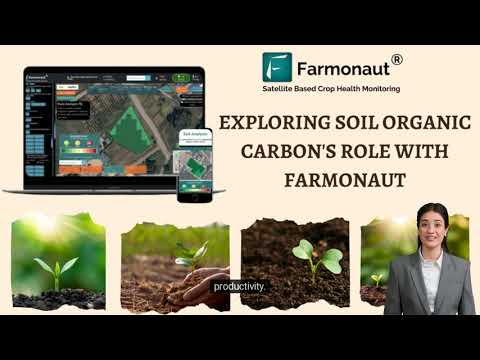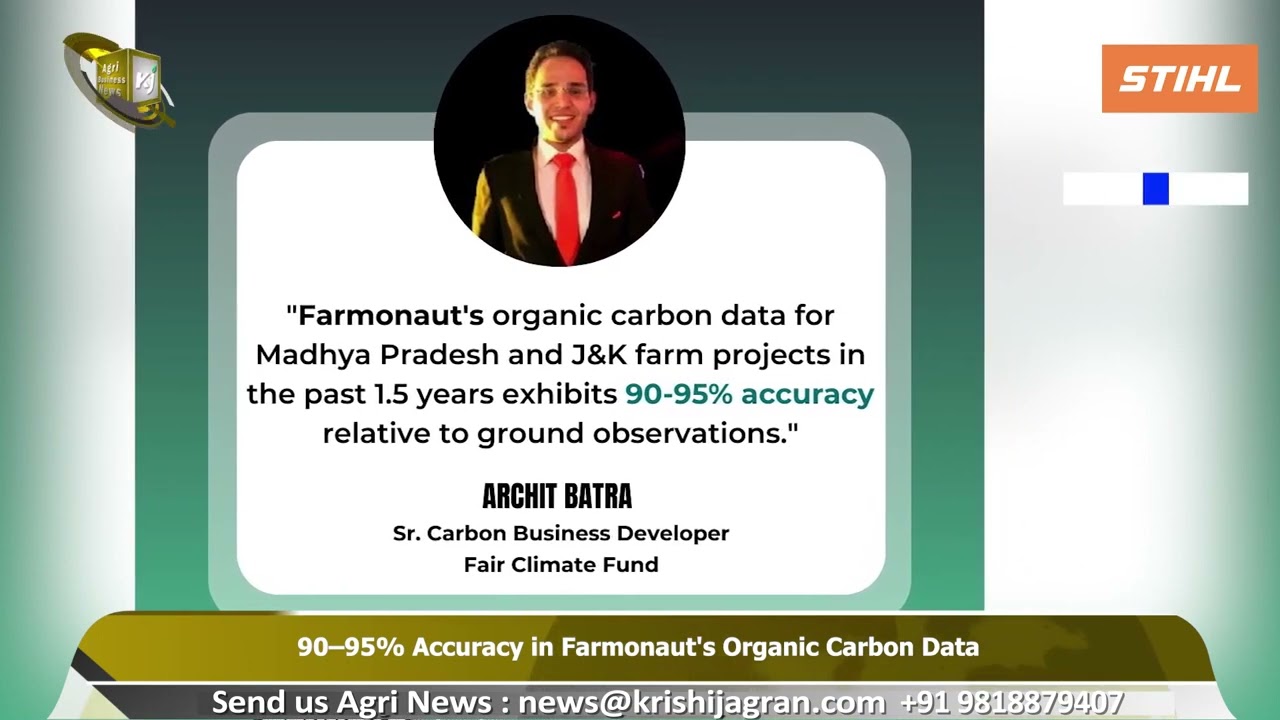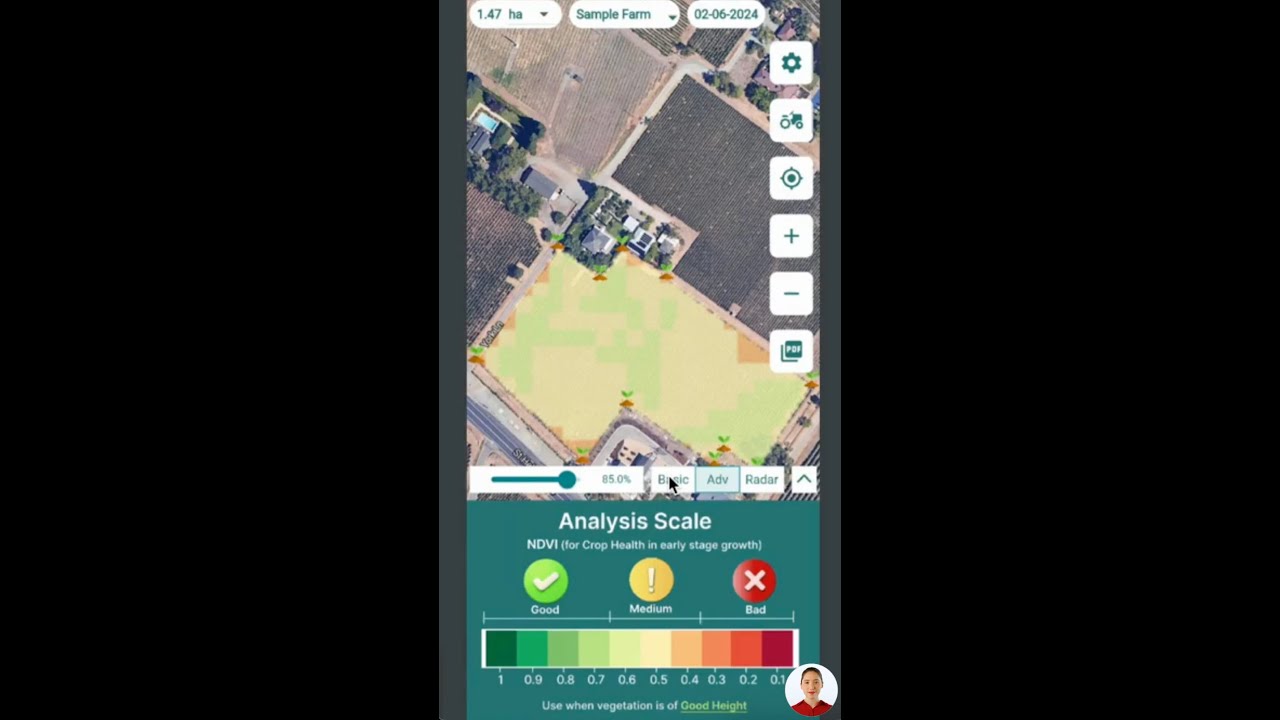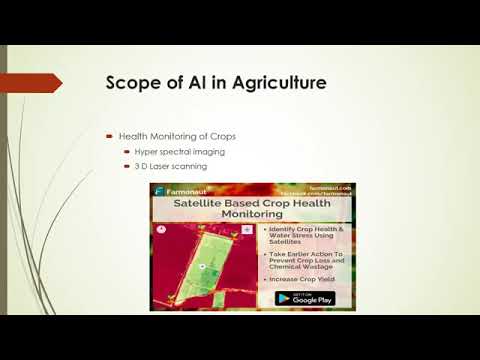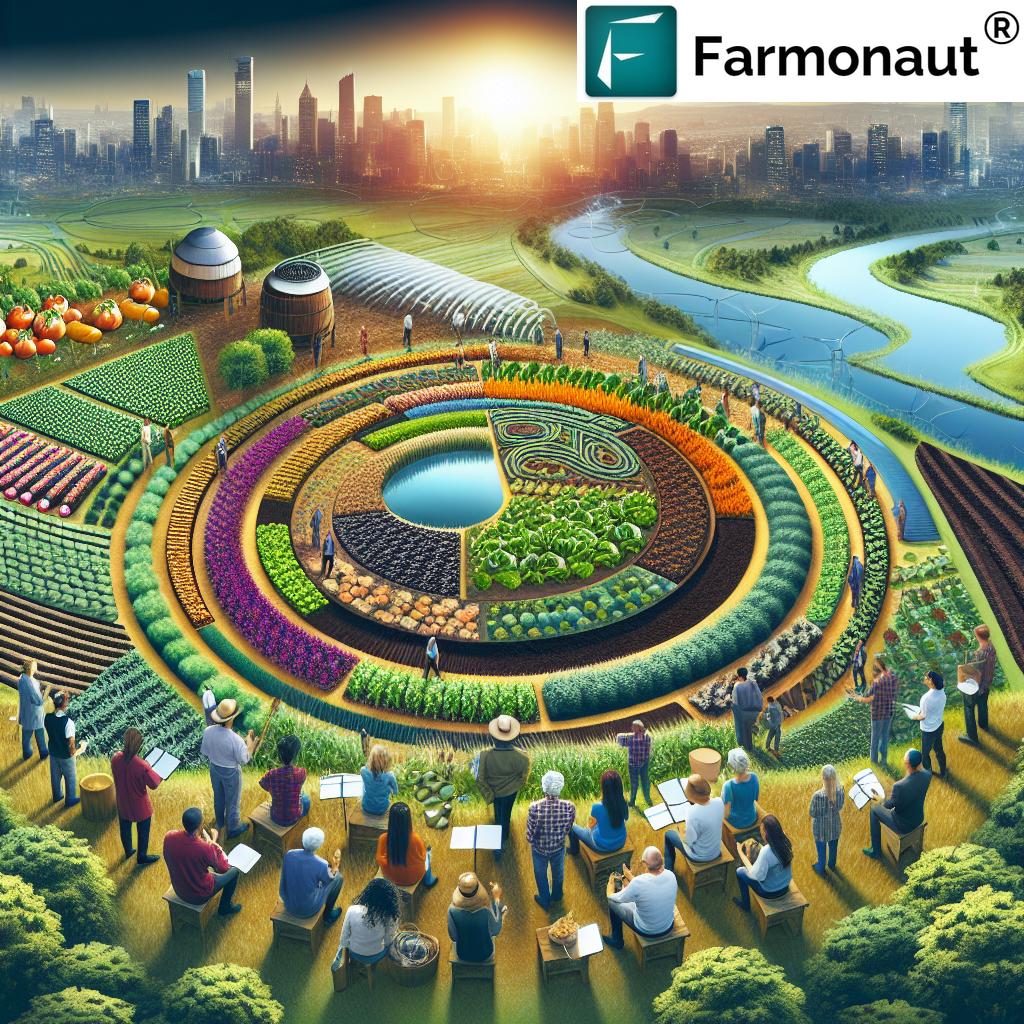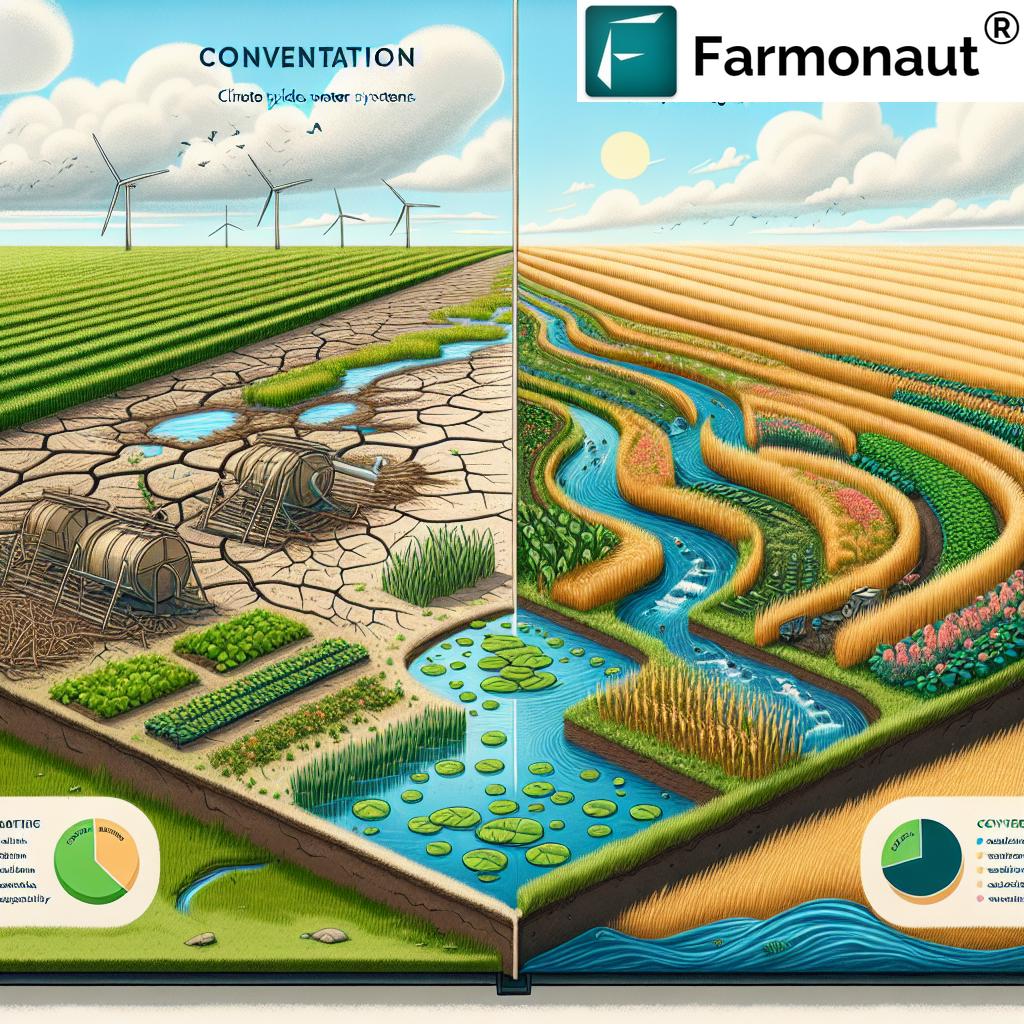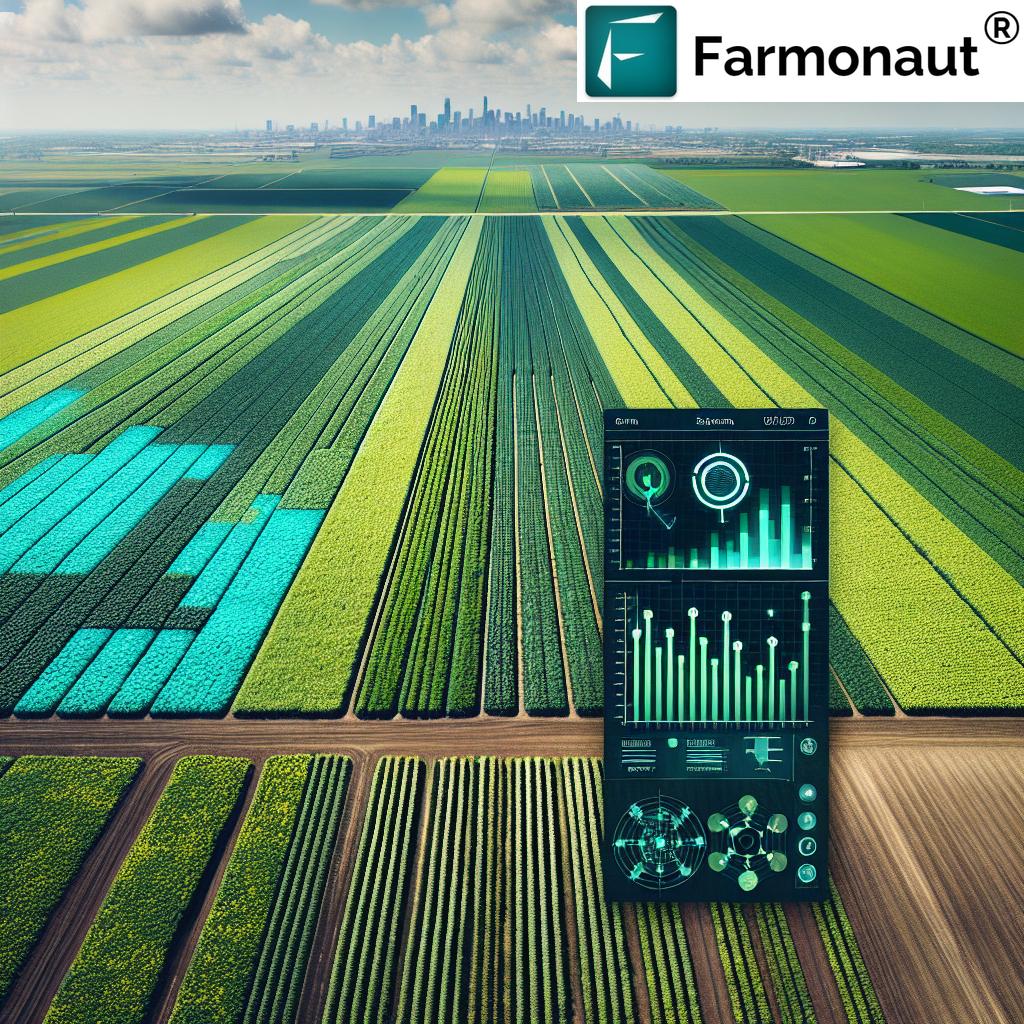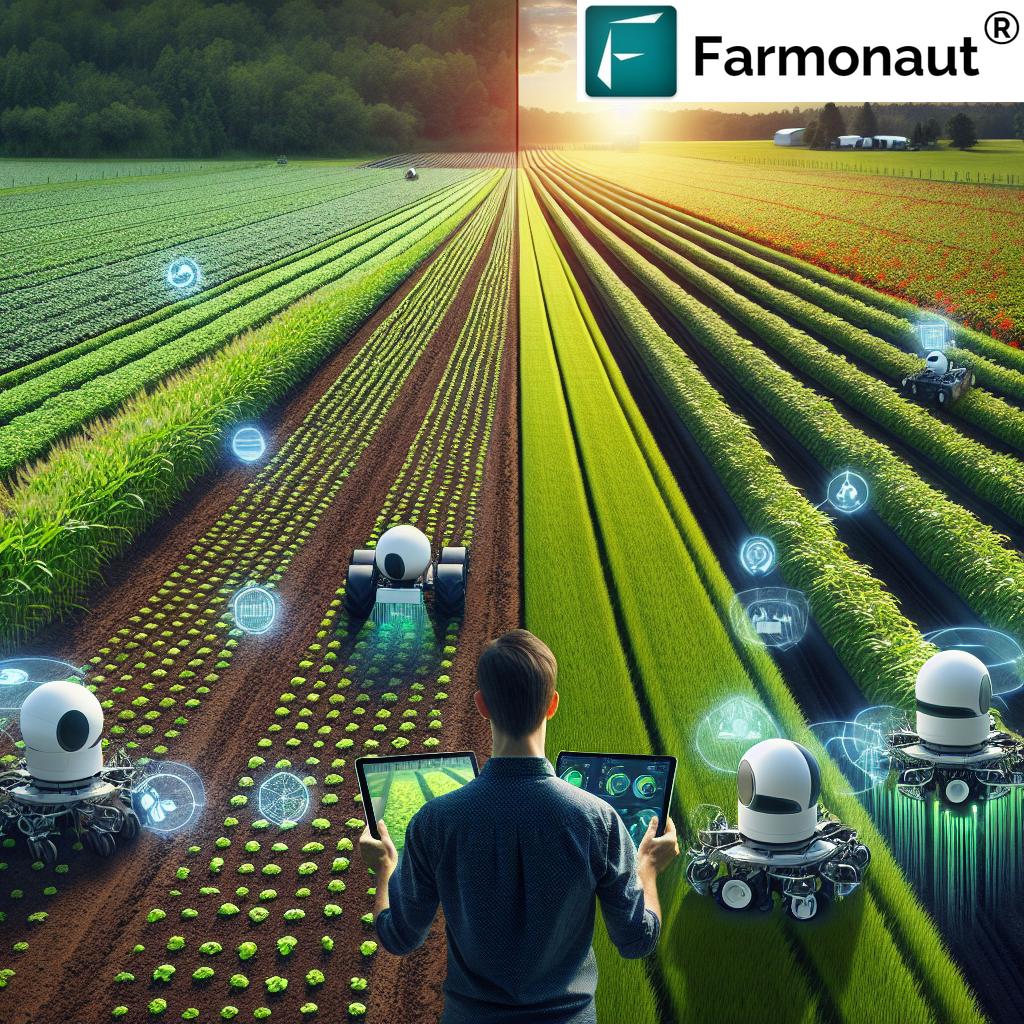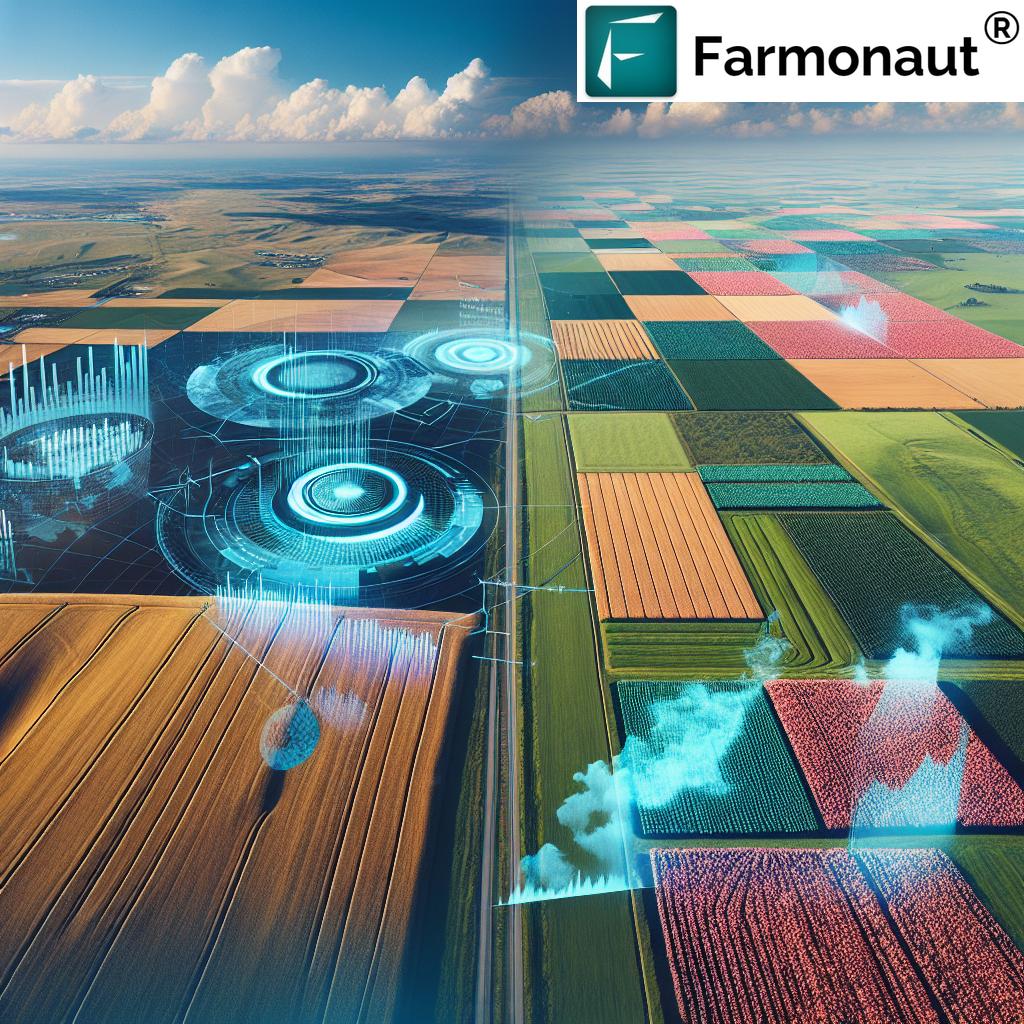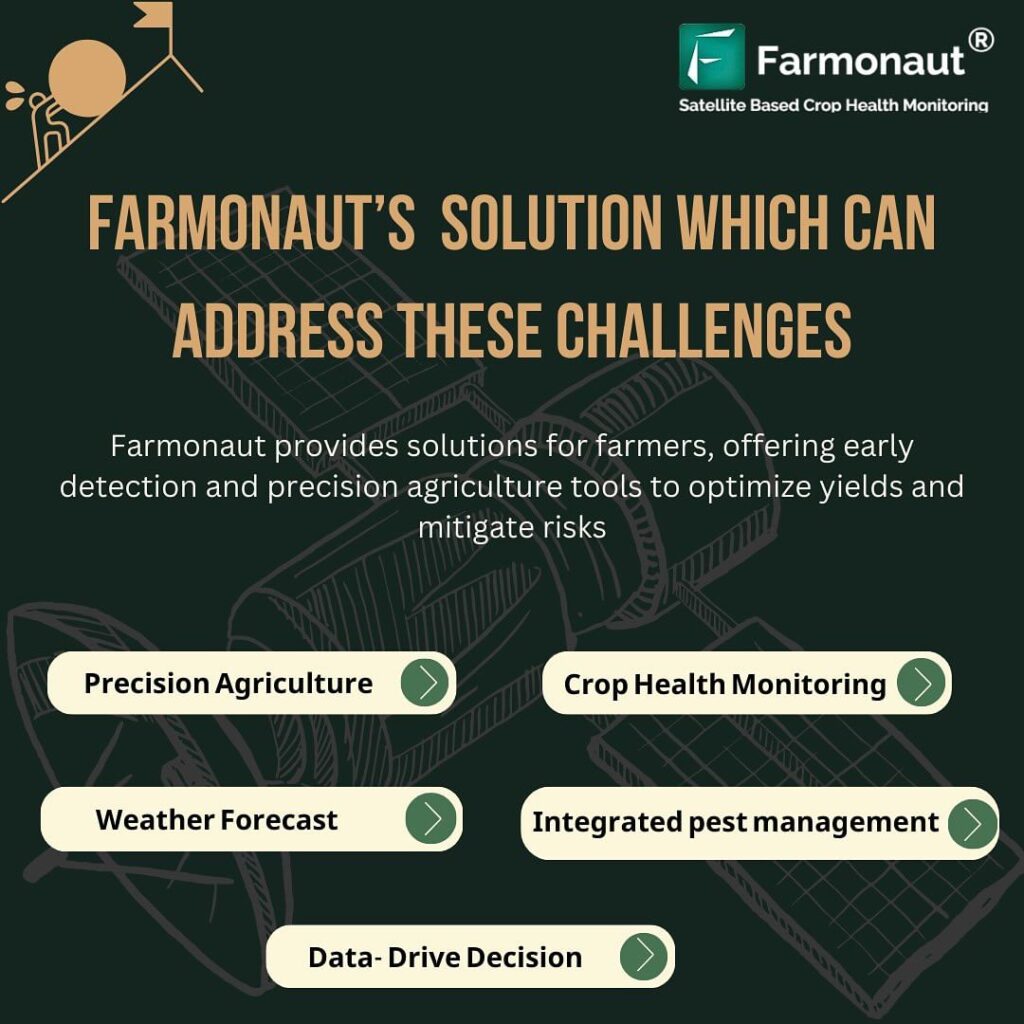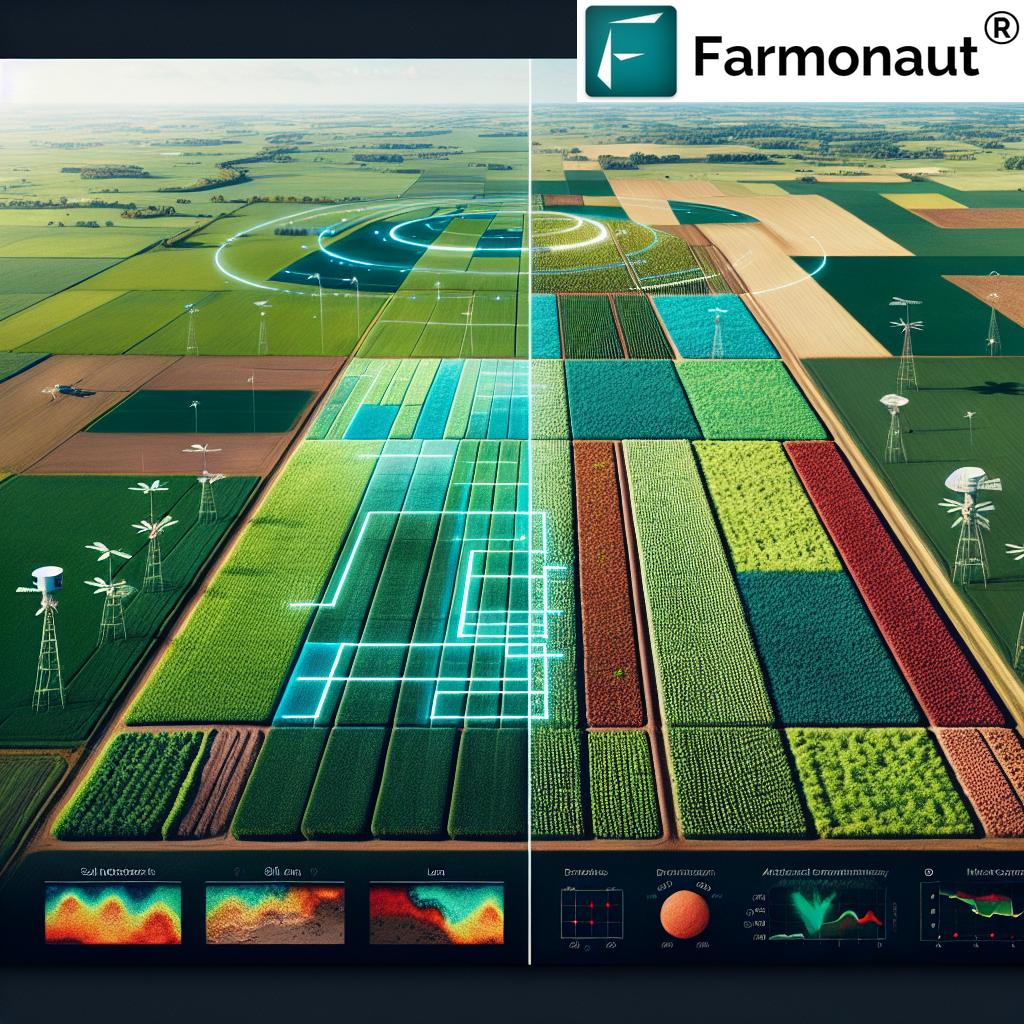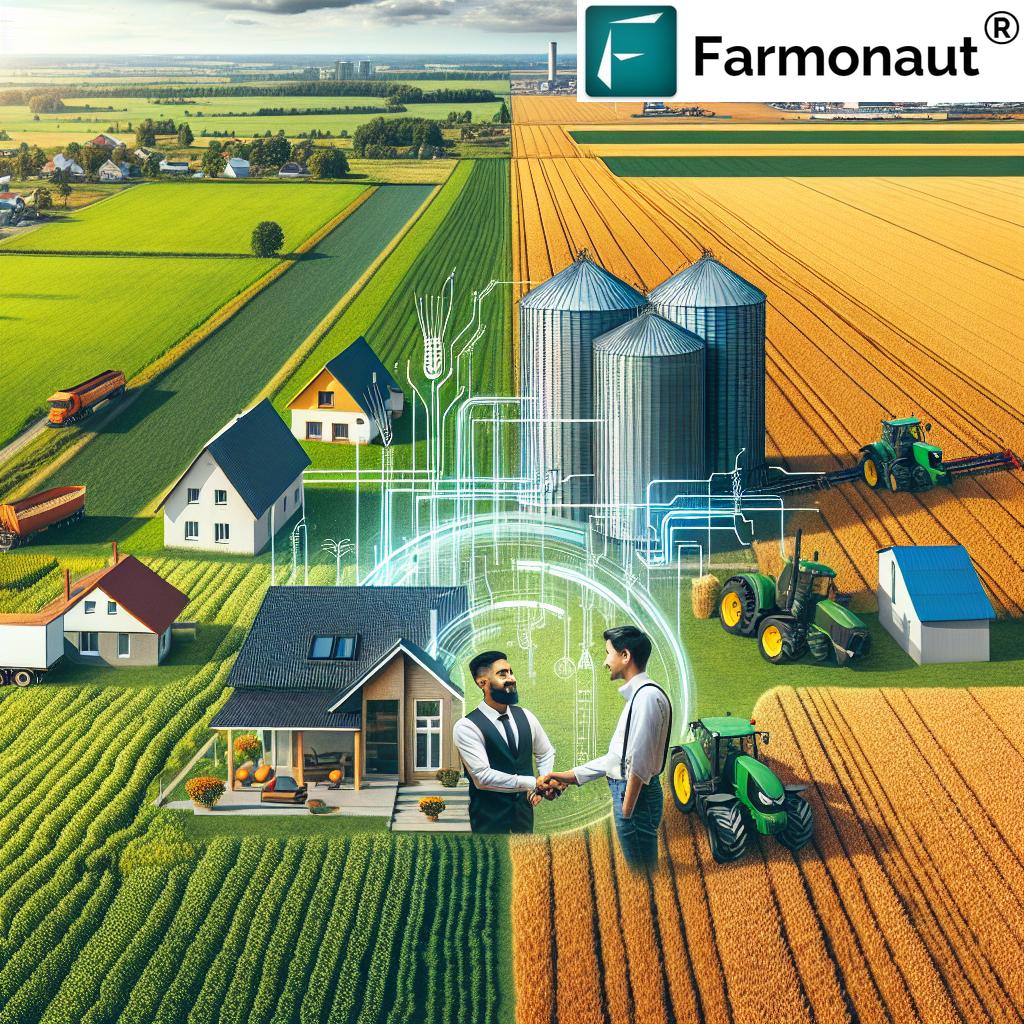Unlocking Sustainable Farming: Farmonaut’s Guide to Regenerative Agriculture in Los Angeles
“Regenerative agriculture can improve water conservation by up to 25% compared to conventional farming methods.”
Welcome to Farmonaut’s comprehensive guide on regenerative agriculture in Los Angeles, CA. As leaders in agricultural technology, we recognize the pivotal role that sustainable farming practices play in addressing global climate challenges and enhancing soil health. In this blog post, we’ll explore the essentials of regenerative agriculture and how it’s transforming the landscape of farming in the City of Angels and beyond.
Understanding Regenerative Agriculture Basics
Regenerative agriculture is more than just a buzzword; it’s a revolutionary approach to farming that focuses on restoring and enhancing the entire ecosystem. At its core, regenerative agriculture aims to improve soil health, increase biodiversity, enhance water cycles, and sequester carbon from the atmosphere. These practices not only benefit the environment but also contribute to more resilient and productive farming systems.
Here in Los Angeles, where water scarcity and urban sprawl pose significant challenges to agriculture, the principles of regeneration offer hope for a more sustainable future. By implementing regenerative techniques, farmers in our region can play a crucial role in combating climate change while producing nutritious food for our growing population.
The Connection Between Soil Health and Climate Change
One of the fundamental aspects of regenerative agriculture is its focus on soil health. Healthy soils are not just the foundation for robust crop growth; they’re also powerful carbon sinks. As we at Farmonaut have observed through our satellite-based crop health monitoring, soil organic matter is a key indicator of overall farm health and sustainability.
When farmers implement regenerative practices, they’re not just improving their yields; they’re actively participating in climate change mitigation. Healthy soils can sequester significant amounts of carbon dioxide from the atmosphere, effectively turning farms into carbon storage facilities. This process not only helps combat global warming but also improves the soil’s water retention capacity, making farms more resilient to drought—a critical factor for agriculture in Los Angeles.
Regenerative Agriculture Techniques and Their Benefits
| Technique | Description | Benefits |
|---|---|---|
| Cover Cropping | Planting non-cash crops during off-seasons to protect and nourish soil |
|
| No-Till Farming | Minimizing soil disturbance by planting without tilling |
|
| Crop Rotation | Alternating crops in a specific order over several seasons |
|
| Composting | Creating nutrient-rich soil amendments from organic waste |
|
At Farmonaut, we’ve developed tools to help farmers implement and monitor these regenerative practices effectively. Our satellite-based crop health monitoring system allows farmers to track the impact of their regenerative efforts in real-time, ensuring they’re on the right path to sustainable farming.
Water Conservation in Agriculture: A Los Angeles Imperative
In a city where water is a precious commodity, regenerative agriculture offers promising solutions for water conservation. Through improved soil health and smart farming practices, regenerative agriculture can significantly reduce water usage while maintaining or even increasing crop yields.
Our Jeevn AI Advisory System at Farmonaut provides real-time insights on soil moisture levels, helping farmers make informed decisions about irrigation. By combining this technology with regenerative practices, Los Angeles farmers can lead the way in water-efficient agriculture.
Organic Farming Techniques in Regenerative Agriculture
While not all regenerative farms are organic, many organic farming techniques align closely with regenerative principles. These include:
- Use of natural pest control methods
- Crop diversification
- Minimizing synthetic inputs
- Promoting beneficial insects and microorganisms
By incorporating these organic farming techniques into regenerative practices, farmers can create robust, self-sustaining ecosystems that require fewer external inputs and produce healthier crops.
Climate-Friendly Farming Methods
Regenerative agriculture is at the forefront of climate-friendly farming methods. By focusing on soil health and natural ecosystems, these practices not only reduce the carbon footprint of farming but actively contribute to carbon sequestration. Some key climate-friendly methods include:
- Agroforestry: Integrating trees with crops or livestock
- Holistic grazing management: Mimicking natural grazing patterns
- Reduced tillage: Minimizing soil disturbance
- Use of cover crops: Protecting and enriching soil between cash crops
At Farmonaut, we’re committed to supporting farmers in their transition to these climate-friendly methods. Our carbon footprinting feature allows agribusinesses to track their emissions in real-time, empowering them to make informed decisions about their farming practices.
The Regenerative Movement: Education and Outreach
“Online courses on regenerative farming have seen a 150% increase in enrollment over the past year.”
The growing interest in regenerative agriculture has led to a surge in educational initiatives. Organizations like Kiss the Ground are at the forefront of this movement, offering comprehensive online courses such as “Regenerative Agriculture Essentials.” These courses are designed to educate a diverse audience, from industry professionals to climate activists and consumers, about the principles and practices of regenerative farming.
As advocates for sustainable agriculture, we at Farmonaut recognize the importance of these educational efforts. By combining theoretical knowledge with practical tools like our satellite-based monitoring systems, we can empower farmers to implement regenerative practices effectively.
Regenerative Agriculture for Beginners
For those new to the concept of regenerative agriculture, getting started can seem daunting. However, even small steps can make a significant impact. Here are some tips for beginners:
- Start with soil testing to understand your baseline
- Implement cover cropping to improve soil health
- Reduce or eliminate tillage to preserve soil structure
- Diversify your crops to enhance biodiversity
- Use natural fertilizers and pest control methods
Our Farmonaut app provides invaluable support for beginners, offering real-time data on crop health and soil conditions to guide your regenerative journey.
Soil Health for Planetary Wellness
The health of our soil is inextricably linked to the health of our planet. Regenerative agriculture practices that focus on building soil organic matter not only improve farm productivity but also contribute to broader environmental benefits. These include:
- Increased carbon sequestration
- Improved water quality through reduced runoff
- Enhanced biodiversity both above and below ground
- Reduced need for synthetic inputs
By prioritizing soil health, we’re not just improving our farms; we’re contributing to the overall wellness of our planet. At Farmonaut, our mission aligns closely with this goal, as we provide tools that help farmers monitor and improve their soil health over time.
The Role of Technology in Regenerative Agriculture
While regenerative agriculture often emphasizes traditional farming wisdom, modern technology plays a crucial role in its implementation and success. At Farmonaut, we’re at the forefront of this technological revolution in farming. Our suite of tools includes:
- Satellite-Based Crop Health Monitoring: Provides real-time insights into vegetation health and soil moisture levels.
- Jeevn AI Advisory System: Offers personalized farm advice based on satellite data and AI analysis.
- Blockchain-Based Product Traceability: Ensures transparency in the supply chain, crucial for verifying regenerative practices.
- Carbon Footprinting: Helps farmers track and reduce their environmental impact.
These technologies empower farmers to make data-driven decisions, optimize their regenerative practices, and demonstrate the impact of their efforts.
Explore Farmonaut’s API for advanced agricultural insights
The Economic Benefits of Regenerative Agriculture
While the environmental benefits of regenerative agriculture are clear, it’s important to highlight that these practices can also be economically beneficial for farmers. Some key economic advantages include:
- Reduced input costs through decreased reliance on synthetic fertilizers and pesticides
- Improved crop resilience leading to more stable yields
- Potential premium prices for regeneratively grown products
- Increased long-term farm value through improved soil health
Our Farmonaut platform helps farmers track these economic benefits alongside environmental improvements, providing a comprehensive view of their farm’s performance.
Challenges and Solutions in Implementing Regenerative Agriculture
While the benefits of regenerative agriculture are significant, transitioning to these practices can present challenges. Some common hurdles include:
- Initial costs of transition
- Learning curve for new practices
- Potential short-term yield reductions
- Lack of established markets for regenerative products
To address these challenges, we at Farmonaut offer tools and resources to support farmers throughout their regenerative journey. Our AI-driven advisory system can help farmers navigate the transition, while our satellite monitoring provides real-time feedback on the impact of new practices.
The Future of Farming: Regenerative Agriculture in Los Angeles and Beyond
As we look to the future of farming in Los Angeles and across the globe, regenerative agriculture stands out as a beacon of hope. By combining age-old wisdom with cutting-edge technology, we can create a farming system that not only feeds the world but also heals our planet.
At Farmonaut, we’re committed to being part of this future. Our technology empowers farmers to implement regenerative practices effectively, monitor their progress, and contribute to a more sustainable food system. Whether you’re a seasoned farmer or just starting your agricultural journey, we invite you to join us in this regenerative movement.
Farmonaut: Your Partner in Regenerative Agriculture
As we’ve explored throughout this guide, regenerative agriculture is a powerful tool for addressing climate change, improving soil health, and creating a more sustainable food system. At Farmonaut, we’re proud to offer technology solutions that support farmers in their regenerative journey.
Our suite of tools, from satellite-based crop monitoring to AI-driven advisory systems, provides farmers with the data and insights they need to implement regenerative practices effectively. By combining traditional farming wisdom with cutting-edge technology, we’re helping to shape the future of agriculture.
We invite you to explore our platform and see how Farmonaut can support your regenerative agriculture efforts. Whether you’re a small-scale farmer in Los Angeles or managing large agricultural operations, our tools are designed to help you succeed in sustainable farming.
Frequently Asked Questions
Q: What is regenerative agriculture?
A: Regenerative agriculture is a farming approach that focuses on improving soil health, increasing biodiversity, enhancing water cycles, and sequestering carbon from the atmosphere. It aims to restore and improve entire ecosystems while producing food sustainably.
Q: How does regenerative agriculture differ from conventional farming?
A: Unlike conventional farming, which often relies heavily on synthetic inputs and intensive tillage, regenerative agriculture emphasizes natural processes, minimal soil disturbance, and the integration of livestock and crops to create a self-sustaining ecosystem.
Q: Can regenerative agriculture be practiced in urban areas like Los Angeles?
A: Yes, regenerative principles can be applied to urban farming initiatives, community gardens, and even small-scale backyard gardens in Los Angeles. These practices can help improve soil health and biodiversity in urban environments.
Q: How does Farmonaut support regenerative agriculture?
A: Farmonaut provides advanced satellite-based crop monitoring, AI-driven advisory systems, and data analytics tools that help farmers implement and track the success of their regenerative practices. Our technology enables data-driven decision-making for more sustainable farming.
Q: Is regenerative agriculture economically viable?
A: Yes, while there may be initial transition costs, regenerative agriculture can lead to reduced input costs, improved crop resilience, and potential premium prices for products. Many farmers report improved profitability over time with regenerative practices.
Conclusion: Embracing a Regenerative Future
As we’ve explored in this comprehensive guide, regenerative agriculture offers a path forward for sustainable farming in Los Angeles and beyond. By focusing on soil health, water conservation, and climate-friendly practices, we can create a more resilient and productive agricultural system.
At Farmonaut, we’re committed to supporting farmers in this regenerative journey. Our technology provides the tools and insights needed to implement these practices effectively, monitor progress, and demonstrate the tangible benefits of regenerative agriculture.
We invite you to join us in this movement towards a more sustainable future. Whether you’re a farmer looking to transition to regenerative practices, a consumer interested in supporting sustainable agriculture, or an industry professional seeking to understand these innovative approaches, there’s a place for you in the regenerative agriculture community.
Together, we can transform our food system, improve our planet’s health, and create a more sustainable future for generations to come. Let’s unlock the potential of sustainable farming, one regenerative practice at a time.
Ready to start your regenerative journey with Farmonaut? Explore our platform today and take the first step towards more sustainable farming.
Earn With Farmonaut: Join our affiliate program and earn 20% recurring commission by helping farmers save 10% with your promo code. Onboard 10 Elite farmers monthly to earn a minimum of $148,000 annually—start now and grow your income!
Learn More About Our Affiliate Program
Join us in revolutionizing agriculture and creating a more sustainable future for all. With Farmonaut’s technology and your commitment to regenerative practices, we can make a real difference in the world of farming.


